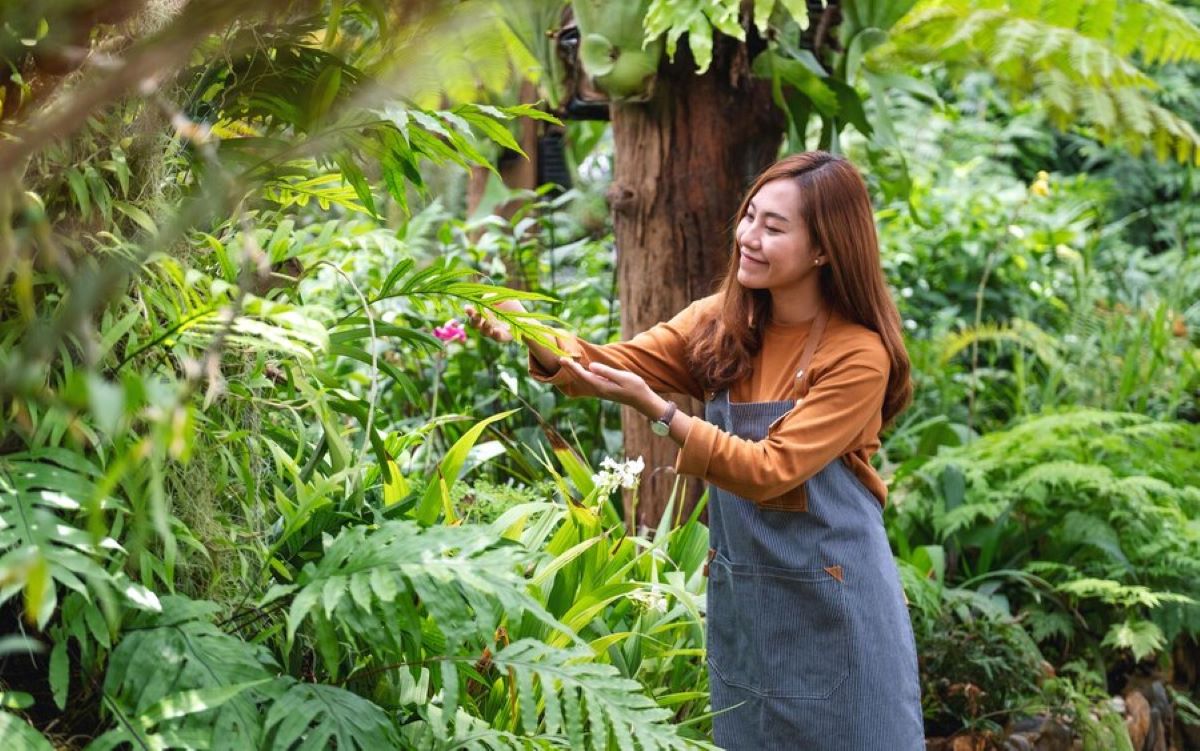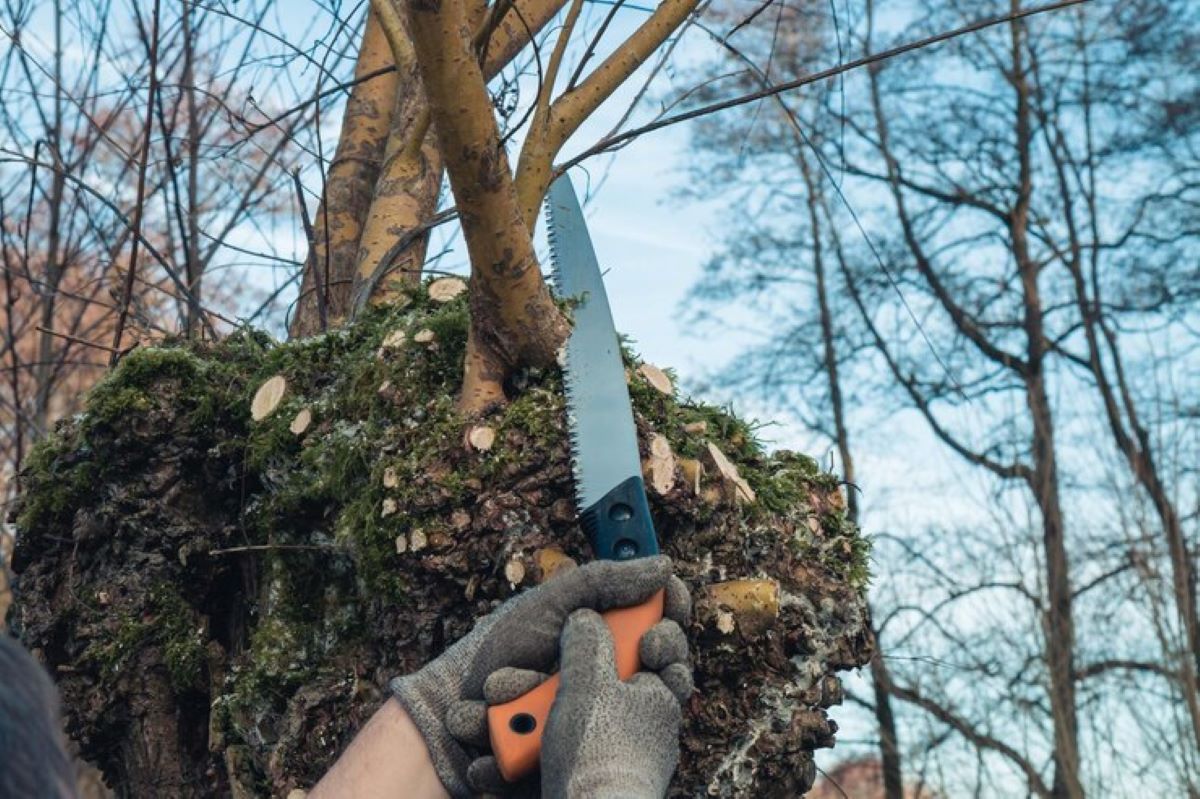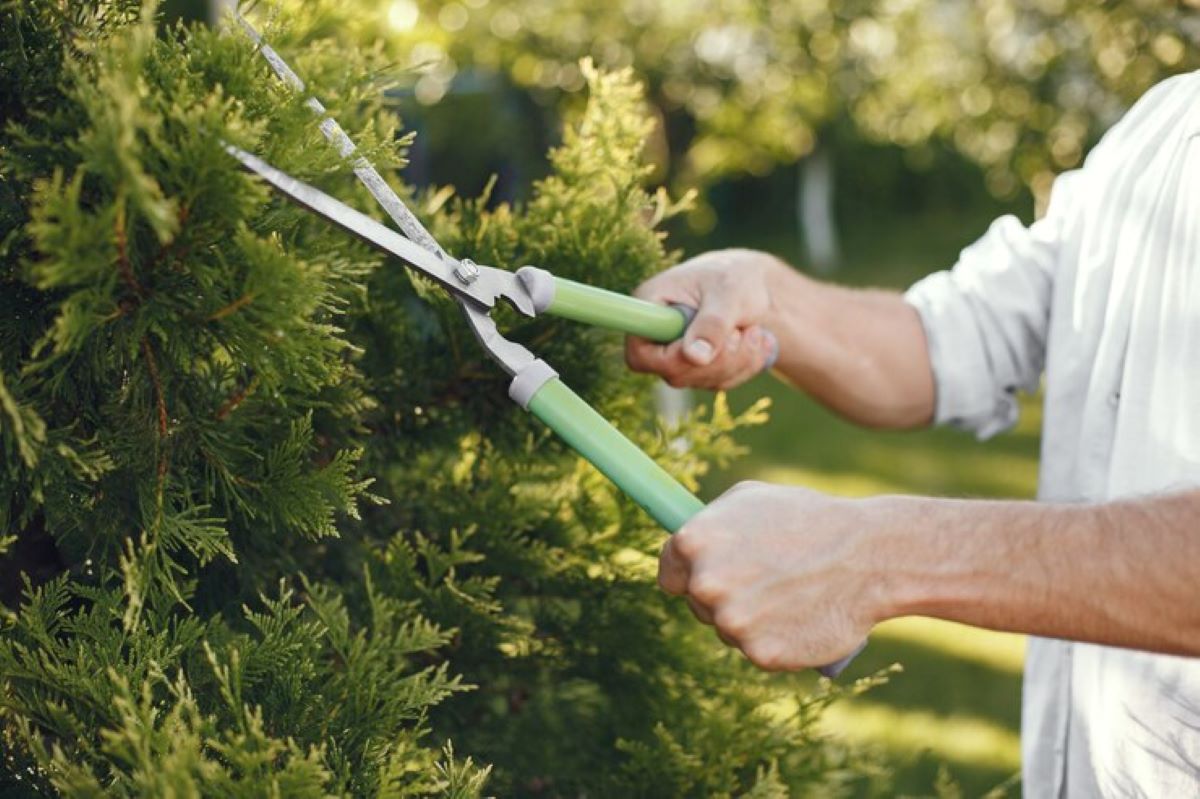What Are Tree Pruning Services and Why Are They Important?
Tree pruning services involve the strategic removal and trimming of branches by trained specialists to maintain optimal tree health. Professional arborists assess each tree’s unique needs and apply specific cutting techniques to promote vigorous growth whilst preventing disease spread.
The importance of tree pruning extends across multiple dimensions:
- Safety: Removing dead or weakened branches prevents them from falling and causing property damage or injury
- Aesthetics: Shaping the canopy enhances visual appeal and maintains desired size within your landscape
- Health management: Eliminating diseased wood stops infections from spreading throughout the tree
- Growth control: Directing energy to productive branches improves structural integrity and fruit production
Professional arborists bring essential expertise that DIY approaches cannot match. Their certifications ensure they understand tree biology, proper cutting angles, and seasonal timing. They identify subtle signs of disease or structural weakness that untrained eyes miss. Attempting complex pruning without this knowledge risks permanently damaging trees, creating entry points for pests, or violating local regulations that protect certain species.
What Types of Tree Pruning Services Are Commonly Offered Near Me?
Professional arborists offer several specialized types of tree pruning tailored to specific tree conditions and homeowner goals. Each technique serves distinct purposes for tree health and property management.
1. Canopy Lifting
Canopy lifting raises the lower branches to create clearance beneath the tree, ideal for improving access along pathways or driveways whilst allowing more light to reach ground-level plants.
2. Thinning
Thinning selectively removes interior branches to reduce density, improving air circulation and light penetration whilst maintaining the tree’s natural shape. This service is part of the broader category of tree trimming and pruning which includes various techniques aimed at enhancing the health and appearance of your trees.
3. Reduction Pruning
Reduction pruning decreases the overall size of the tree’s crown, useful for managing growth near buildings or power lines without compromising structural integrity.
4. Pollarding
Pollarding involves cutting back branches to the main trunk, creating a distinctive form often used for urban trees requiring strict size control.
5. Deadwood Removal
Deadwood removal eliminates dead, dying, or diseased branches that pose safety risks and harbour pests.
6. Fruit Tree Pruning
Fruit tree pruning focuses on optimizing branch structure to maximize yield and fruit quality, typically requiring annual maintenance during dormant periods.
Different tree species respond uniquely to these techniques—ornamental trees benefit from aesthetic shaping, whilst native species may require minimal intervention focused on hazard reduction. For more insights into other related services such as tree trimming, it’s always beneficial to consult with an expert in the field.
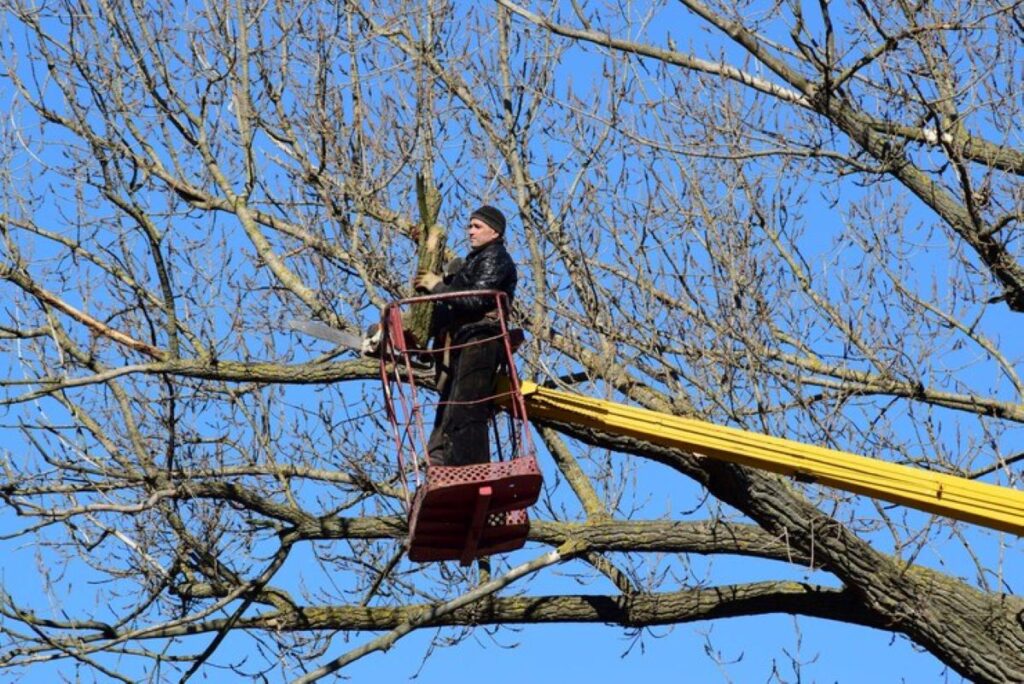
How Do Tree Pruning Services Promote Tree Health and Safety?
Professional pruning directly targets diseased, dead, or damaged branches that compromise tree health benefits. Arborists identify and remove infected limbs before pathogens spread throughout the canopy, preventing widespread decay that could kill the entire tree. This targeted disease removal stops fungal infections, bacterial blights, and pest infestations at their source.
Structural improvements through safety in tree pruning reduce the risk of falling branches during storms or high winds. Removing weak, crossing, or poorly attached limbs creates a balanced framework that distributes weight evenly across the tree’s structure. This proactive approach prevents property damage and personal injury from unexpected branch failure.
Pruning stimulates vigorous new growth by redirecting the tree’s energy to healthy branches and productive areas. Fruit trees particularly benefit from strategic cuts that open the canopy to sunlight, improving air circulation and increasing yield quality. Thinning dense foliage allows nutrients to reach developing fruit rather than sustaining excessive leaf growth, resulting in larger harvests and stronger overall vitality.
What Factors Influence the Cost of Tree Pruning Services Near Me?
When it comes to tree pruning services, there are several factors that can affect the cost. Here are some of the main ones:
1. Tree Size and Species
The size and species of the tree are two of the most important factors that tree pruning services consider when giving a quote. Here’s a breakdown of how these factors can impact the cost:
- Small trees (under 10 metres): Typically range from £250-£350
- Medium trees: Cost £350-£550
- Large trees (exceeding 20 metres): Can reach £900-£1,800
It’s also worth noting that different species of trees may require different amounts of time and effort to prune. For example, dense hardwoods like oak may require more labour time than softer species, which can directly impact the price.
2. Location Accessibility Costs
The accessibility of the location where the tree is situated can also have a significant impact on the cost of labour. If the tree is positioned near buildings, power lines, or in confined spaces, it may require specialised equipment and additional safety measures to prune it safely.
In some cases, arborists may need to use cranes or rope-access techniques to reach certain areas of the tree, which can increase their hourly rates from the standard £35 baseline.
3. Additional Service Costs
In addition to basic trimming, there are other services that may be required after the pruning is done. These additional services can come with their own costs:
- Debris removal: Chipping and hauling away branches can add an extra £50-£200 to your bill
- Travel fees: If your property is located outside of the standard service area for tree pruning companies, they may charge distance fees for travelling to your location
- Stump grinding: If you want the stump removed as well, this will be a separate service that costs between £100-£400 per stump
- Emergency call-outs: If you need tree pruning done urgently or outside of regular working hours, be prepared to pay premium rates for this service
4. Site Preparation and Cleanup
The way you prepare the site before the tree pruning takes place and how thorough the cleanup is afterwards can also affect how much you’ll end up paying.
For example, if there are obstacles such as furniture or vehicles in close proximity to where the work will be done, it’s best to move them out of the way beforehand so that arborists can easily access the area without any delays.
Similarly, if you have specific requirements for how green waste should be disposed of (such as composting instead of sending it to landfill), make sure to communicate this with the tree pruning service in advance as it may incur additional costs.
By understanding these factors that influence pricing for tree pruning services near me, you’ll be better equipped to plan your budget accordingly and ensure a smooth experience throughout the process.
When Is the Best Time to Schedule Tree Pruning for Optimal Cost and Results?
The best time for tree pruning depends on balancing cost savings with your tree’s biological needs. Winter pruning typically offers the most affordable rates, with prices dropping 15-30% during dormant months when demand is low and arborists have more availability. Cold weather also stresses trees less, allowing them to heal efficiently before spring growth.
Spring and summer pruning commands premium pricing due to high demand and active growing seasons. These periods suit specific needs:
- Flowering trees benefit from post-bloom trimming to avoid removing next year’s buds
- Fruit trees require summer pruning to redirect energy toward fruit production
- Emergency situations like storm damage can’t wait for ideal timing
Seasonal pricing differences reflect both market demand and labour conditions. Winter work proceeds faster with bare branches visible, reducing labour hours despite cold weather challenges. Spring scheduling requires booking weeks ahead as arborists manage peak season workloads.
Most deciduous trees thrive with late winter pruning (January-March), whilst evergreens tolerate year-round maintenance. Consulting a certified arborist ensures timing aligns with your tree species’ growth cycle and your budget constraints.
Are There Legal or Regulatory Considerations for Tree Pruning Near Me?
Do I need permission before pruning trees on my property? Yes, many councils require permits for pruning large trees, heritage-listed specimens, or trees in conservation areas. Local regulations tree pruning requirements vary by region, but typically trees exceeding certain trunk diameters or heights fall under protection orders.
What rules apply to trees near power lines or public spaces? Pruning within three metres of overhead power lines requires approval from your electricity distributor. Trees overhanging footpaths, roads, or neighbouring properties may need council notification before work begins. Some areas prohibit pruning during bird nesting seasons to protect wildlife.
What happens if I ignore these regulations? Non-compliance can result in substantial fines ranging from hundreds to thousands of pounds. Unauthorised pruning of protected trees may lead to prosecution and mandatory replanting requirements. Professional arborists understand these local regulations tree pruning standards and handle all necessary paperwork, ensuring your work proceeds legally whilst protecting you from potential penalties.
Why Should I Hire a Certified Arborist Instead of DIY Pruning?
Certified arborists have qualifications from recognised organisations like the International Society of Arboriculture (ISA) or equivalent national bodies. This shows they have expertise in tree biology, proper cutting techniques, and specific care requirements for different tree species. With these credentials, you can be sure that your trees will receive treatment based on scientific principles rather than guesswork.
The Risks of DIY Pruning
DIY pruning comes with significant risks that go beyond just making your trees look bad. Here are some potential dangers:
- Introducing Disease: Incorrect cuts can create openings in the tree’s bark, making it susceptible to infections.
- Weakening Structural Integrity: If you don’t know what you’re doing, you might make cuts that compromise the strength of the tree.
- Killing the Tree: Removing too much foliage at once can shock the tree and lead to its demise.
- Legal Violations: Homeowners without proper training may unknowingly break local tree preservation orders or make illegal cuts near power lines, resulting in hefty fines or liability for property damage.
How Professional Arborists Ensure Safety
Before starting any work, professional arborists conduct thorough safety assessments to identify potential hazards. They look for things like unstable branches, nearby structures, or underground utilities that could pose risks during the pruning process.
The Benefits of Hiring a Certified Arborist
When you hire a certified arborist, you gain access to their expertise and resources. Here’s what they bring to the table:
- Specialised Equipment: Arborists have specialised climbing gear and cutting tools designed for safe and efficient pruning.
- Liability Insurance: Professional arborists carry liability insurance that protects your property in case of accidents or damages.
- Knowledgeable Techniques: With their understanding of weight distribution and branch removal sequences, arborists can perform precise cuts that promote healthy growth.
- Eco-Friendly Practices: Certified arborists follow proper disposal methods for green waste, ensuring environmentally-friendly practices.
By entrusting your tree care needs to a certified arborist, you can rest assured knowing that trained professionals are handling the job with utmost care and expertise. Visit https://www.epa.nsw.gov.au/Your-environment/Waste/transporting-waste/Disposing-garden-organics-waste to get about disposing garden waste.
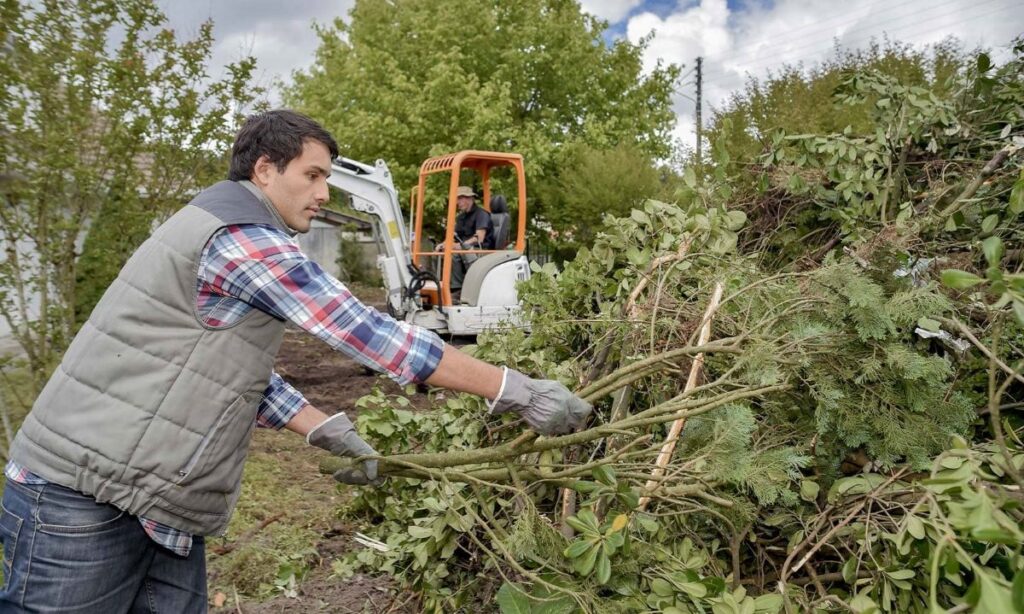
What Is Typically Included in Professional Tree Pruning Services Near Me?
Professional tree pruning packages cover branch trimming executed according to industry best practices and arboricultural standards. Arborists assess your tree’s structure and health before making precise cuts that promote healing and future growth.
Included services in tree pruning extend beyond the actual cutting work:
- Site preparation with protective ground coverings to prevent lawn damage
- Safety equipment setup including barriers around the work zone
- Strategic branch removal targeting deadwood, crossing limbs, and structural weaknesses
- Complete debris collection from all trimmed branches and foliage
- Thorough site cleanup leaving your property in pristine condition
Most reputable services handle green waste disposal through council-approved facilities or commercial composting centres. Some arborists offer wood chipping services, converting larger branches into mulch you can retain for garden use. The service fee typically bundles all these elements, though some providers itemise disposal separately.
Professional teams arrive with commercial-grade equipment, complete the work efficiently, and ensure no trace of debris remains on your property. This includes handling the debris removal process professionally, ensuring a hassle-free experience for you. Check out more about Top 7 Tree Pruning Mistakes Homeowners Make and How to Avoid Them.
How Can I Find Reliable Tree Pruning Services Near Me Today?
Finding trustworthy tree pruning services requires checking specific credentials and comparing service offerings. Start by verifying that providers hold relevant certifications from recognised arboriculture bodies and carry comprehensive insurance coverage.
When you search to find local tree pruners, prioritise these essential factors:
- Certification status – Look for ISA Certified Arborists or equivalent qualifications
- Transparent pricing – Request detailed written quotes that break down labour, equipment, and disposal costs
- Insurance documentation – Confirm public liability and workers’ compensation coverage
- Customer reviews – Read recent testimonials and check ratings on independent platforms
- Local knowledge – Choose arborists familiar with regional tree species and council regulations
Contact at least three licensed arborists for personalised assessments of your property. A reputable professional will conduct an on-site evaluation, explain which pruning techniques suit your trees, and provide a comprehensive quote covering all aspects of Tree Pruning Services Near Me: What’s Included and How Much Does It Cost?
Don’t delay necessary tree maintenance. Postponing pruning can lead to structural failures, disease spread, or safety hazards that cost significantly more to remedy. Schedule your consultation with a qualified arborist today to protect your investment and ensure your trees remain healthy, safe, and beautiful for years to come.
Quick FAQs: Tree Pruning Services
Professional trimming of branches to improve health, safety, and aesthetics.
2. Why is pruning important?
Prevents hazards, controls growth, enhances appearance, and stops disease spread.
3. Common types of pruning?
Canopy lifting, thinning, crown reduction, pollarding, deadwood removal, fruit tree pruning.
4. How does pruning improve tree health?
Removes diseased or dead limbs, balances structure, improves sunlight and air flow, boosts growth.
5. Factors affecting cost?
Tree size/species, accessibility, additional services (debris removal, stump grinding), seasonal timing.
6. Best time to prune?
Late winter for deciduous trees; seasonal timing may vary for flowering or fruiting trees.
7. Legal considerations?
Permits may be required for large, heritage, or protected trees; pruning near power lines often needs approval.
8. DIY vs. professional pruning?
Certified arborists ensure safety, proper cuts, legal compliance, and reduce risks of disease or damage.
9. What’s included in professional services?
Site prep, safety setup, branch removal, debris cleanup, green waste disposal.
10. How to find reliable arborists?
Check certifications, insurance, customer reviews, transparent pricing, and local expertise.

